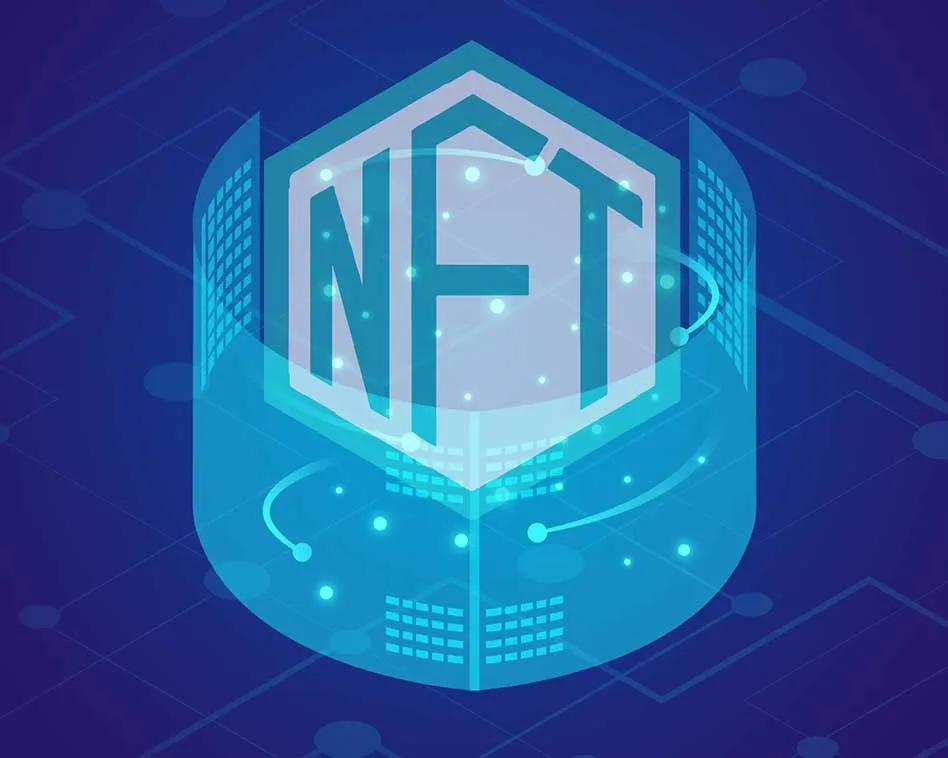
In recent years, the Non-Fungible Token (NFT) industry has exploded. The notion of NFT was inspired by an Ethereum token standard that aimed to distinguish each token using distinct signatures. As its unique identifiers, this sort of token can be coupled with virtual/digital attributes. All indicated properties can be freely sold with customized values based on their ages, rarity, liquidity, and other factors using NFTs. It has boosted the growth of the decentralized application (DApp) market significantly.
The total amount spent on completed NFT sales is 34,530,649.86 USD. However, the NFT ecosystem is still in its early stages of development, and NFT technologies are still in their infancy.
We begin by providing an overview of current NFT systems, followed by technical components, protocols, standards, and desirable properties. This is, to our knowledge, the first comprehensive blog on the present NFT ecosystems.
Introduction;
NFT was first presented in the Ethereum Improvement Proposals and has since grown in popularity. In terms of core qualities, NFT varies from traditional crypto currencies.
In layman’s terms, a Non-Fungible Token (NFT) is a sort of crypto currency created from Ethereum’s Smart Contracts. To be more specific, a creator can easily establish the existence and ownership of digital assets in the form of videos, images, arts, event tickets, and so on by leveraging NFTs on smart contracts (in Ethereum).
Additionally, the author can receive royalties for each successful trade on any NFT market or through peer-to-peer trading. NFT has the potential to become a promising intellectual property (IP)-protection solution due to its full-history tradability, deep liquidity, and easy interoperability.
Elements of Technology;
Block Chain.
It’s a distributed and attached-only database that keeps track of a series of data entries that are interlinked and encrypted using cryptographic mechanisms. Because any changes to the recorded data invalidate all subsequent data, the shared data on the block chain becomes immutable once it is confirmed in the majority of distributed nodes Smart Contract
Unknown parties and decentralized players can perform fair transactions without the need for a trusted third party, and smart contracts also present a consistent framework for developing applications across a wide range of industries. . To achieve order-sensitive executions, most NFT solutions go with smart contract-based block chain platforms. State-transition algorithms support the apps that run on top of smart contracts.
Address and Transaction
A block chain address is a one-of-a-kind identification for a user to transfer and receive assets, comparable to a bank account when spending money in a bank. It is made up of a set of alphanumeric characters that are created from a pair of public and private keys. To transfer NFTs, the owner must demonstrate that he or she has the corresponding private key and send the assets to another address using a valid digital signature.
Data Encoding
The process of transferring data from one form to another is known as encoding. Hex values are used to encode transactional components such as function names, variables, and return values in major block chain systems like Ethereum. These rules must be followed by the raw NFT data. If someone claims ownership of NFT-based intellectual property, they are also claiming ownership of the original hex values signed by the inventor.
Protocols;
NFT needs the creation of an underlying shared database for records, as well as transferable transactions for peer-to-peer trading. The distributed ledger is largely treated as a specific form of database for storing NFT data. We identify two design patterns for the NFT paradigm;
Top to bottom;
An NFT protocol in the first design has two additional roles: NFT owner and NFT buyer. An NFT owner double-checks that the file, title, and description are all correct. The raw data is stored outside the blockchain by an NFT owner in an external database. The NFT owner signs a transaction and transmits it to a smart contract, which includes the hash of NFT data. The minting and trading procedure begins after the smart contract gets the transaction with the NFT data. The minting procedure is completed once the transaction is confirmed. NFTs will be permanently linked to a unique blockchain address as their persistence evidence using this method.
Bottom to Top;
The protocol for this design has two roles: NFT maker and NFT buyer. Because an NFT product is formed based on random seeds when a customer bids for it, in most circumstances a buyer can also function as a creator. In terms of user customization, this expands the functions. The superscript is used here to emphasize changes from the previous one. The project’s founder uses a smart contract to create a template that includes some basic principles. When a buyer places a bid for an NFT, he or she can add a set of extra features to the product in addition to the basic lines. Once the proper smart contract is invoked, the minting and trading process begins. Smart contracts are used to carry out all of the procedures. When the consensus procedure is finished, the created NFT will be permanently kept on-chain.
Properties;
Since NFT schemes are fundamentally decentralized applications, they benefit from the benefits and properties of the public ledgers that underpin them. The ownership of the NFT, as well as its token metadata, may be validated publicly. The minting, selling, and purchasing actions of NFTs are all open to the public. The NFT system is unaffected by power outages. Alternatively, you may always sell and acquire all of the tokens and issued NFTs. Once the transactions are deemed as confirmed, the NFT metadata and trading records are constantly preserved and cannot be changed. Every NFT has the most up-to-date ownership data that is both user-friendly and information-rich. NFTs and their accompanying goods can be traded and exchanged at will.
Assessment of Security;
An NFT system is a technology stack that includes blockchain, storage, and a web application. The NFT system’s security evaluation is difficult because each component might act as an attacking interface, making the entire system extremely vulnerable to an attacker. We use the STRIDE threat and risk assessment [106], which considers all aspects of a system’s security, including authenticity, integrity, non-repudiability, availability, and access control.
Spoofing;
It is the ability to impersonate another entity (such as a person or a computer) on the system, which is equivalent to authenticity. A hacker could utilize authentication flaws or acquire the user’s private key to improperly transfer NFT ownership. To prevent private key leaking, we advocate a formal verification for the NFT smart contract and the use of a cold wallet.
Tampering;
Tampering is defined as the unauthorized change of NFT data in order to compromise its security. Data held outside of the blockchain can be tinkered with. While trading NFT-related properties, we advise that customers send both the hash data and the original data to the NFT buyer.
Information Disclosure;
When confidential information is exposed to unauthorized users, it is known as information leakage. Cybercriminals can readily exploit the link ability of the hash and transaction if the user just enters the NFT hash into the blockchain. To preserve the user’s privacy, we advise the NFT developer to employ privacy-preserving smart contracts rather than conventional smart contracts.
Repudiation;
The term “repudiation” refers to a scenario in which the creator of a statement is unable to refute it, and it is connected to the security attribute of nonrepudiability. The unforgeability feature of a signature system and the security of the blockchain ensure this. Nonetheless, a hostile intruder might tamper with the hash data, or the hash data could bind with the attacker’s address. We believe that employing a multi-signature contract can help to overcome this problem in part because each binding must be confirmed by many parties.
Denial of Service;
It is a form of network assault in which a hostile attacker attempts to make a server unavailable to its intended users by disrupting normal operations. Fortunately, the blockchain ensures that user operations are always available. Authorized customers can access the information they need when they need it and will not lose data resources due to human mistake.
Elevation of Privilege;
Elevation of privilege is associated with authorization. An attacker may get permissions beyond those first provided in this type of danger. A smart contract manages the selling permissions in the NFT system. A badly designed smart contract, once again, may cause NFTs to lose these features.
Potential opportunities;
New forms of ownership are created with this technology, and existing ones are remixed. Artists and content creators have a one-of-a-kind opportunity to monetize their work thanks to blockchain technology and NFTs. Artists, for example, no longer have to sell their work through galleries or auction houses.
Few potential examples of opportunities are as follows;
- Metaverse
- Gaming Industry
- Digital Collectibles
- Virtual Events
Challenges;
As with any embryonic technology, a series of obstacles must be overcome in order for the above NFT applications to be developed. Some of the critical challenges faced are as follows;
- Usability is not efficient enough
- Gas Price is high
- Slow and time consuming confirmation
- Security/privacy breaches
- Inaccessibility of information/data
- Legal pitfalls
- Taxable property policy issue
- Extensibility and anonymity problems
- Governance Consideration
- Taxable property Issues
Conclusion;
The Non-Fungible Token (NFT) is a blockchain based technology that is gaining traction.
In this blog, we have gone through the cutting-edge NFT solutions that could reshape the digital and virtual property market in the future. Adding comprehensive analysis and summary of existing proposed solutions, we have made it easier for newcomers to stay on top of current developments.














Recent Comments